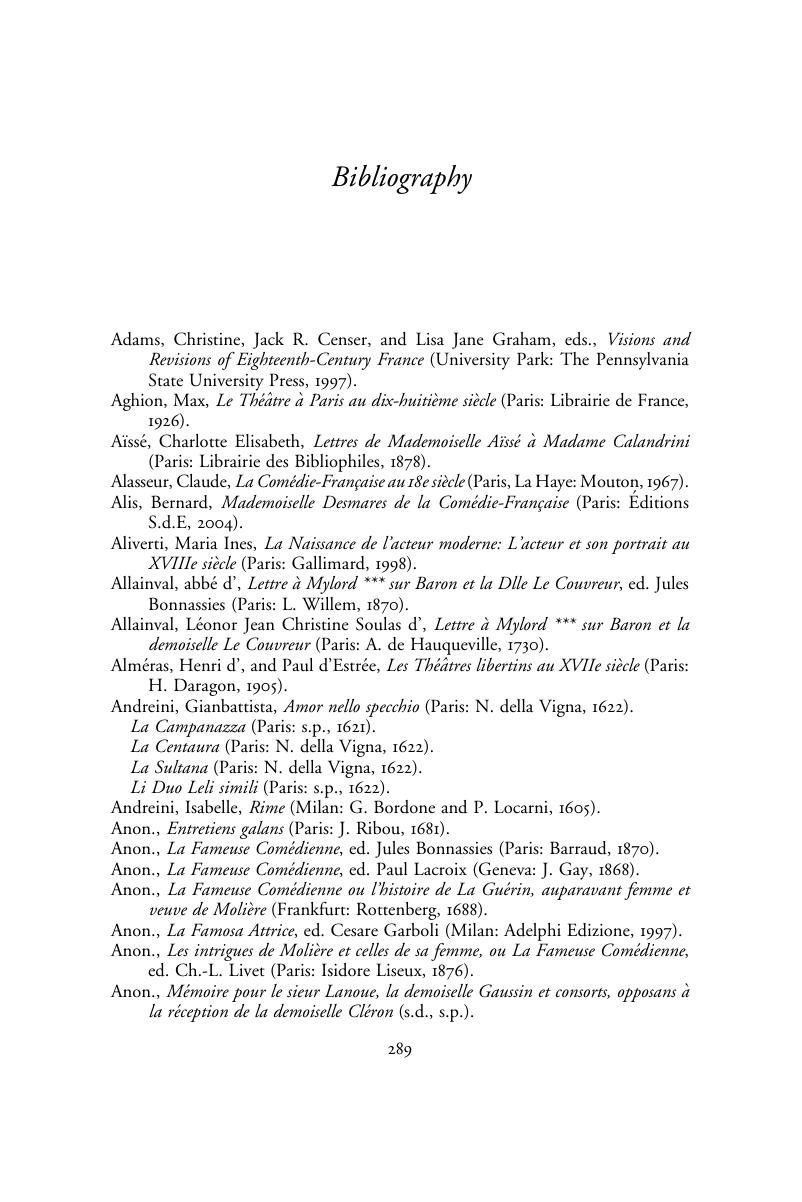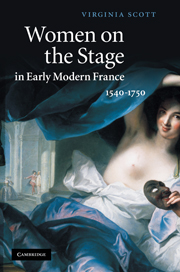Book contents
- Frontmatter
- Contents
- Acknowledgments
- Introduction
- 1 The actress and the anecdote
- 2 “So perverse was her wantonness”: antitheatricalism and the actress
- 3 In the beginning: “12 livres per year”
- 4 “Those diverting little ways”: 1630–1640
- 5 Mademoiselle L'Étoile: 1640–1700
- 6 “Embellished by art”: 1680–1720
- 7 Lives and afterlives: 1700–2010
- Bibliography
- Index
- References
Bibliography
Published online by Cambridge University Press: 03 May 2011
- Frontmatter
- Contents
- Acknowledgments
- Introduction
- 1 The actress and the anecdote
- 2 “So perverse was her wantonness”: antitheatricalism and the actress
- 3 In the beginning: “12 livres per year”
- 4 “Those diverting little ways”: 1630–1640
- 5 Mademoiselle L'Étoile: 1640–1700
- 6 “Embellished by art”: 1680–1720
- 7 Lives and afterlives: 1700–2010
- Bibliography
- Index
- References
Summary

- Type
- Chapter
- Information
- Women on the Stage in Early Modern France1540–1750, pp. 289 - 312Publisher: Cambridge University PressPrint publication year: 2010



